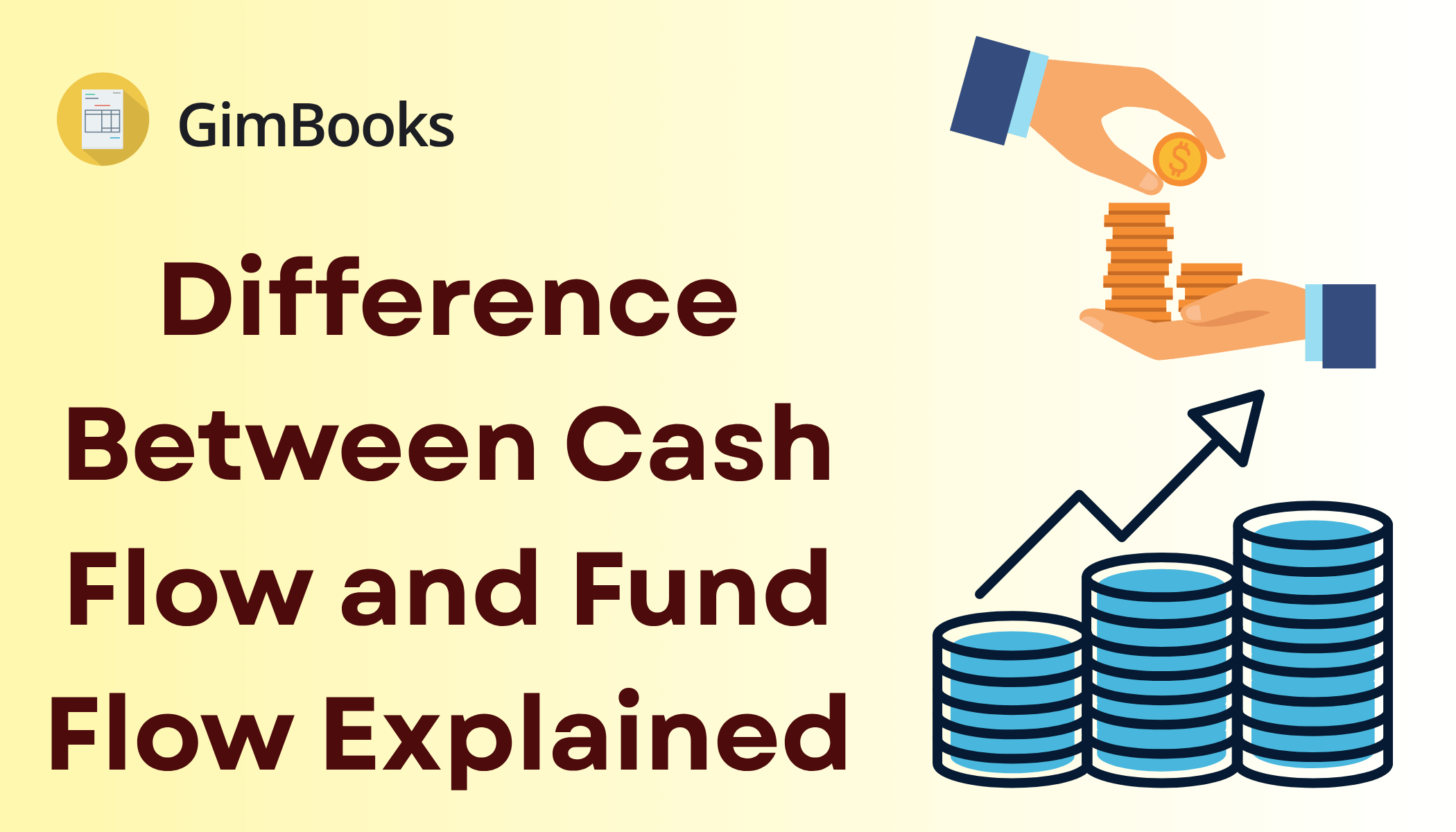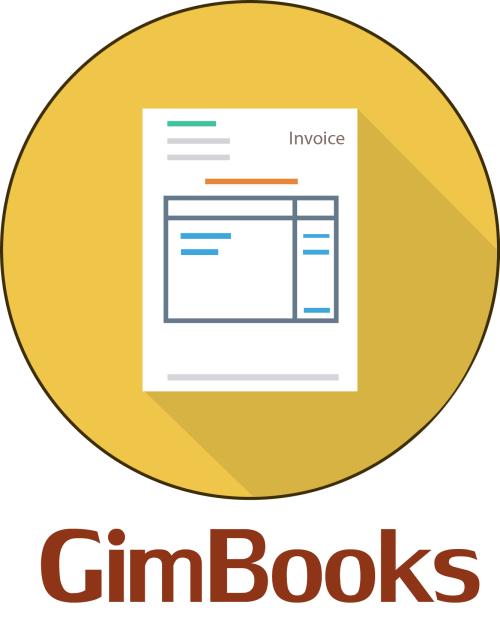Difference Between Cash Flow and Fund Flow Explained Simply

Running a business means keeping a close watch on money, where it comes from, where it goes, and how it moves. That’s where the difference between cash flow and fund flow becomes important. Many small and micro-sized business owners confuse the two, but they are not the same. Each tells a different story about your business’s financial health.
In this article, we’ll explain both cash flow and fund flow in the simplest terms possible. You’ll learn how they work, what they mean, and why understanding the difference between cash flow statements and fund flow statements can help you make better decisions. Plus, we’ll also introduce how GimBooks makes managing both easier than ever.
What is Cash Flow?
Cash flow means the movement of money in and out of your business. It includes the cash you get from customers, loans, or investors and the cash you spend on salaries, bills, raw materials, etc.
In simple words, cash flow is the actual money in your hand.
Types of Cash Flow
The types of cash flow are as follows:
- Operating Cash Flow:
- Money from business activities (like sales and purchases).
- Daily working operations.
- Investing Cash Flow:
- Money spent on or earned from long-term assets (like buying or selling property).
- Financing Cash Flow:
- Cash from loans, investor funding, or debt payments.
Example: If you run a small shop and you earn ₹5,000 in cash today and pay ₹2,000 to buy stock, your net cash flow is ₹3,000.
What is a Cash Flow Statement?
A cash flow statement is a report that shows how much cash comes in and goes out during a particular period. It helps you know if you have enough cash to pay your bills or invest further.
Importance of Cash Flow Statement
- Helps track business liquidity.
- Useful for budgeting and planning.
- Shows real-time money position.
What is Fund Flow?
Now that we’ve covered cash flow, let’s understand what is fund flow.
Fund flow looks at the changes in your financial position over a period. It includes both cash and non-cash items like credit sales or depreciation.
In simple terms, fund flow is about long-term financial health and sources of funds.
Fund Flow Shows
- Where your funds are coming from (sources).
- Where your funds are going (uses).
Example: If you take a loan to buy machinery, it does not change your cash immediately, but your fund flow changes because your assets and liabilities go up.
What is a Fund Flow Statement?
A fund flow statement explains the changes in your business’s financial structure between two balance sheets. It helps you know whether funds are being used properly or not.
Importance of Fund Flow Statement
- Tracks the financial strength of the business.
- Shows how working capital changes.
- Useful for long-term planning.
Key Difference Between Cash Flow and Fund Flow
Let’s now break down the main difference between cash flow and fund flow with clear pointers:
Why Is It Important to Understand Both?
For small and micro-sized businesses, knowing just how much cash is in hand is not enough. You also need to know where your money is tied up, especially if you work on credit or invest in assets.
Here’s why both matter:
Cash Flow Helps You
- Pay salaries and bills on time.
- Avoid cash shortages.
- Make quick financial decisions.
Fund Flow Helps You
- Know your capital structure.
- Decide on long-term investments.
- Understand business growth.
Cash Flow and Fund Flow Statement: A Simple Comparison
To make it easier, here’s a side-by-side comparison of the difference between the cash flow statement and the fund flow statement:
Real-Life Example for Small Businesses
Let’s say you run a small manufacturing unit.
- You sell products worth ₹1 lakh this month but get only ₹60,000 in cash (the rest is on credit). Your cash flow is ₹60,000.
- You can also buy a new machine worth ₹50,000 using a bank loan. It won’t change your cash flow much but will appear in your fund flow.
It shows why both cash flow and fund flow give different but equally important views of your business.
How GimBooks Helps You Track Both Cash and Fund Flows
Understanding these concepts is one thing. Managing them well is another. That’s where GimBooks comes in.
GimBooks is a mobile-first and cloud-based business management software made especially for small and micro-sized businesses in India and the Middle East.
With GimBooks, You Can
- Track all cash transactions with ease.
- Generate real-time cash flow statements.
- Monitor your working capital.
- Record credit sales and purchases for fund flow tracking.
- Keep your finances organized anytime, anywhere!
It also offers domain-based bookkeeping, making it perfect for business owners who are not experts in accounting. Whether you’re a shopkeeper, service provider, or freelancer, GimBooks makes accounting simple.
Other Key Features of GimBooks
- GST-compliant invoicing.
- Quotation and billing generator.
- Inventory and expense tracking.
- Reports for business growth.
Summing Up
The difference between cash flow and fund flow is crucial for small business owners who want to grow without financial stress. While cash flow shows your day-to-day money movement, fund flow gives a broader view of how your business is performing over time.
Knowing the difference between a cash flow statement and a fund flow statement will help you plan better, manage your funds wisely, and avoid financial surprises.
And with a smart and easy tool like GimBooks, you don’t need to be a financial expert to manage your money. You need the right tool to keep track of it all.
Start using GimBooks today to keep your business finances simple, clear, and under control!
Suggested read - Key Difference Between TDS and TCS You Should Know
FAQs
1. What is the main difference between cash flow and fund flow in accounting?
The main difference between cash flow and fund flow is that cash flow shows the actual movement of cash in and out, while fund flow tracks overall financial changes, including non-cash items like credit or depreciation.
2. Why is it important to understand the difference between cash flow and fund flow?
Understanding the difference between cash flow and fund flow helps small businesses manage short-term liquidity and long-term financial health more effectively.
3. How does the difference between cash flow and fund flow affect business planning?
The difference between cash flow and fund flow affects planning by showing immediate cash availability (cash flow) and overall fund usage for strategic decisions (fund flow).
4. Can the difference between cash flow and fund flow impact loan approvals?
Yes, lenders often check the difference between cash flow and fund flow to assess both the repayment capacity and long-term financial stability of a business.
5. Where can I track the difference between cash flow and fund flow easily?
You can track the difference between cash flow and fund flow using tools like GimBooks, which simplifies both cash and fund flow tracking for small businesses.
